Abstract
The ability of two white rot fungi to deplete pentachlorophenol (PCP) from soil, which was contaminated with a commercial wood preservative, was examined in a field study. Inoculation of soil containing 250 to 400 μg of PCP g−1 with either Phanerochaete chrysosporium or P. sordida resulted in an overall decrease of 88 to 91% of PCP in the soil in 6.5 weeks. This decrease was achieved under suboptimal temperatures for the growth and activity of these fungi, and without the addition of inorganic nutrients. Since the soil had a very low organic matter content, peat was included as a source of organic carbon for fungal growth and activity. A small percentage (8 to 13%) of the decrease in the amount of PCP was a result of fungal methylation to pentachloroanisole. Gas chromatographic analysis of sample extracts did not reveal the presence of extractable transformation products other than pentachloroanisole. Thus, when losses of PCP via mineralization and volatilization were negligible, as they were in laboratory-scale studies (R. T. Lamar, J. A. Glaser, and T. K. Kirk, Soil Biol. Biochem. 22:433-440, 1990), most of the PCP was converted to nonextractable soil-bound products. The nature, stability, and toxicity of soil-bound transformation products, under a variety of conditions, must be elucidated before use of these fungi in soil remediation efforts can be considered a viable treatment method.
Full text
PDF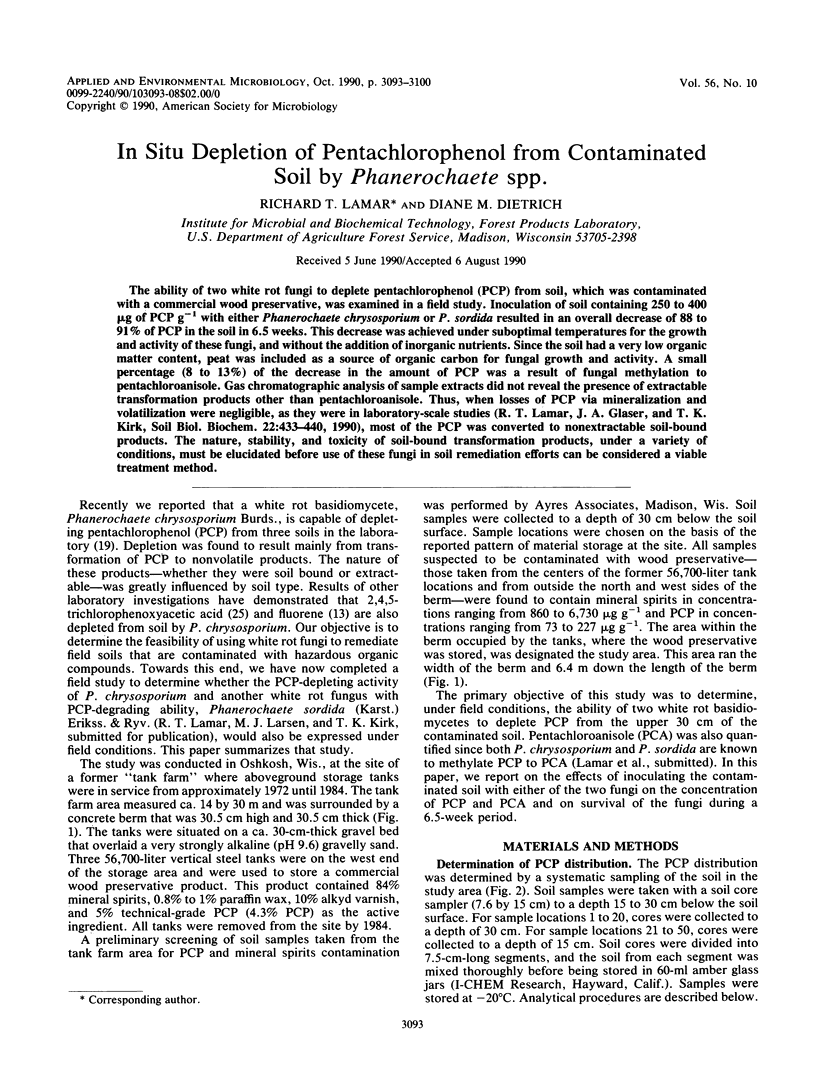
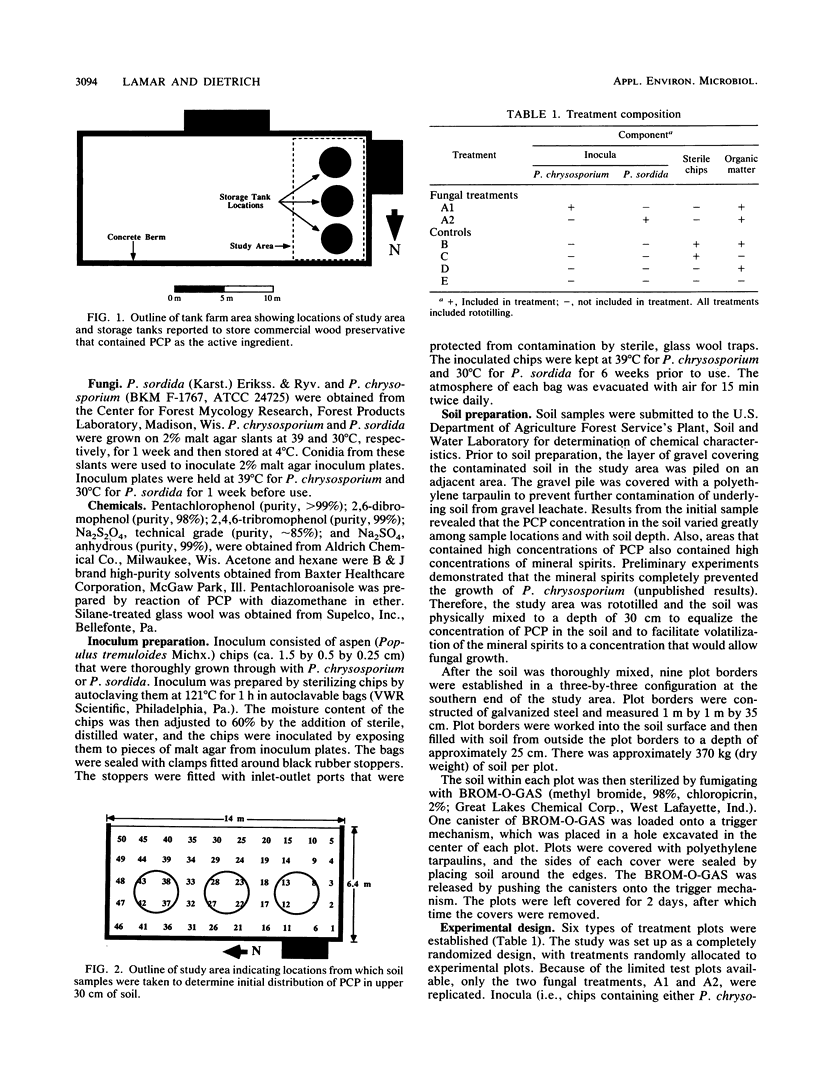
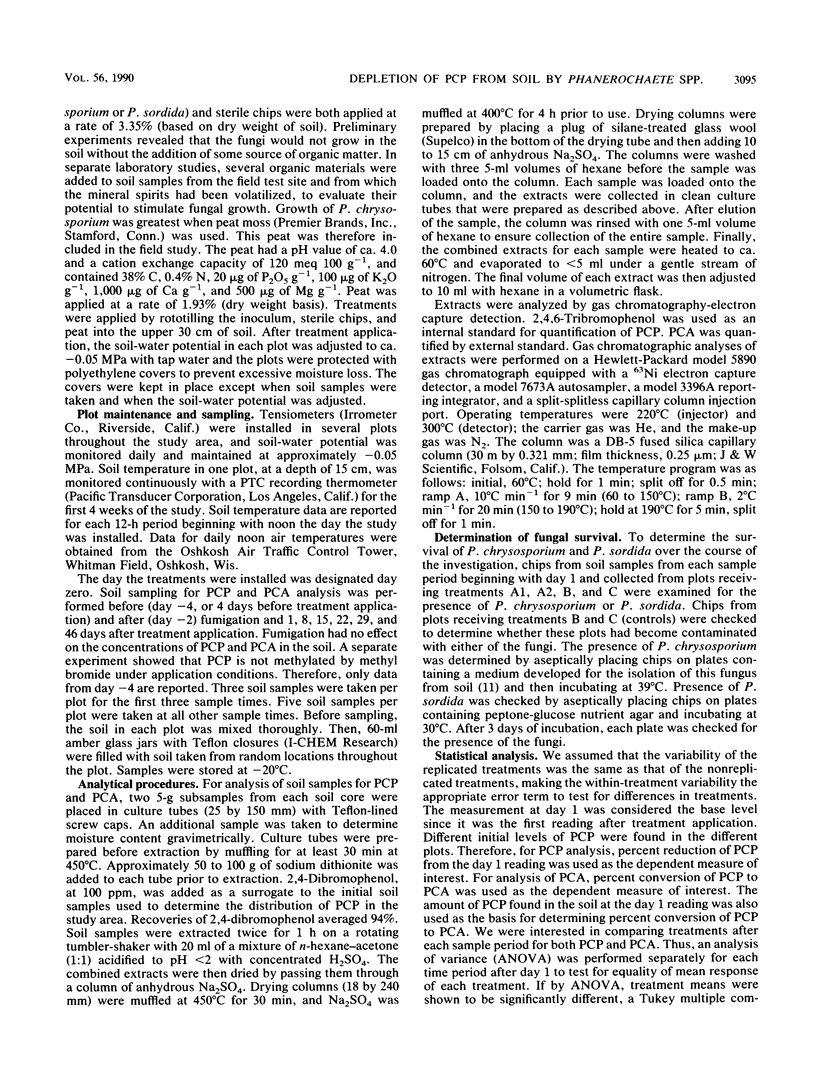
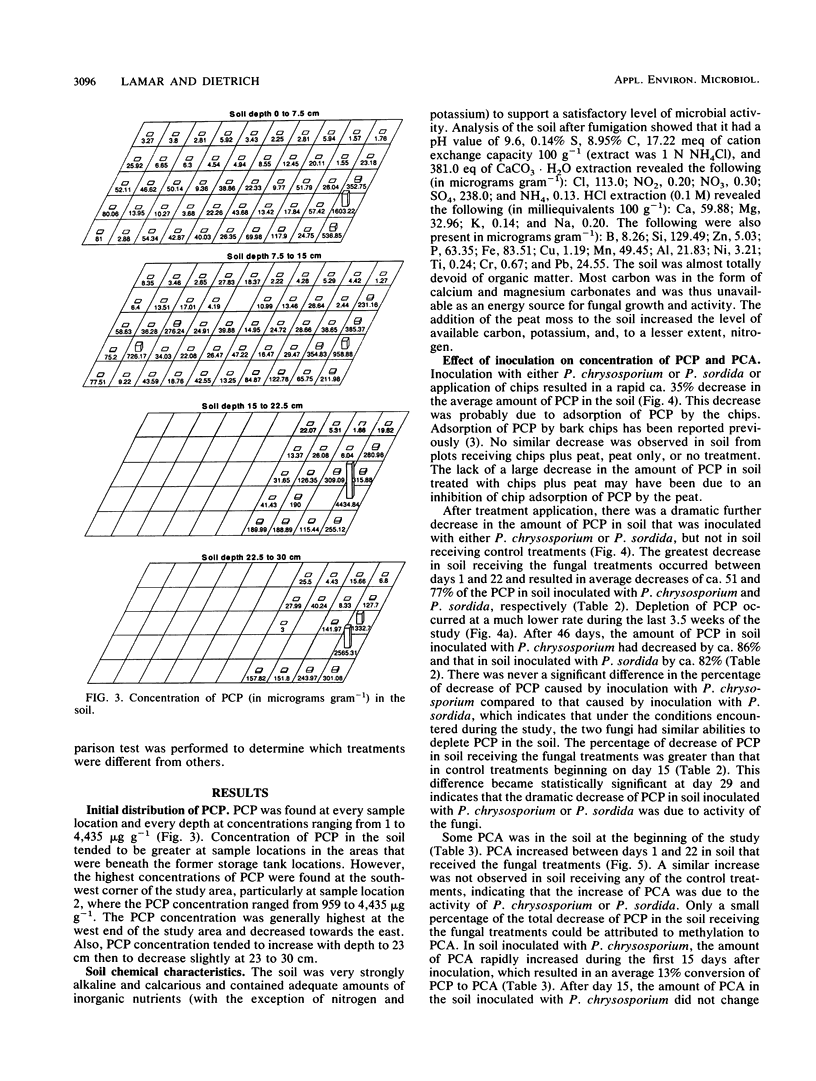
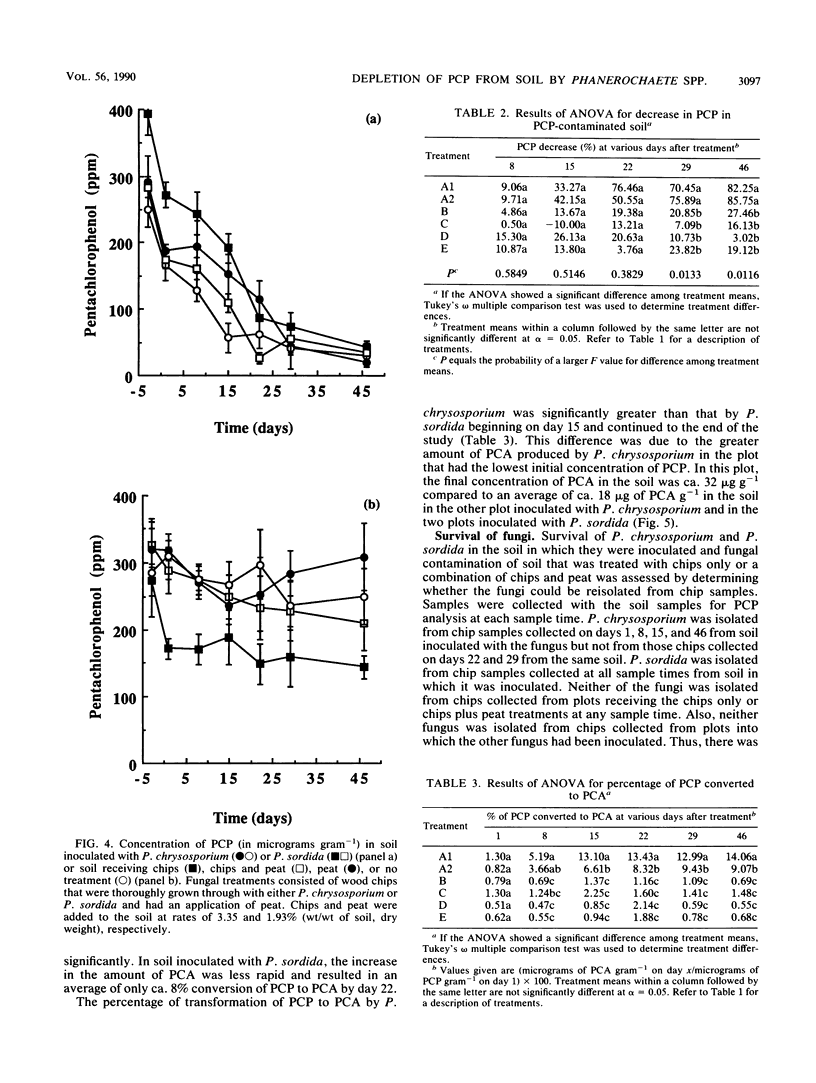

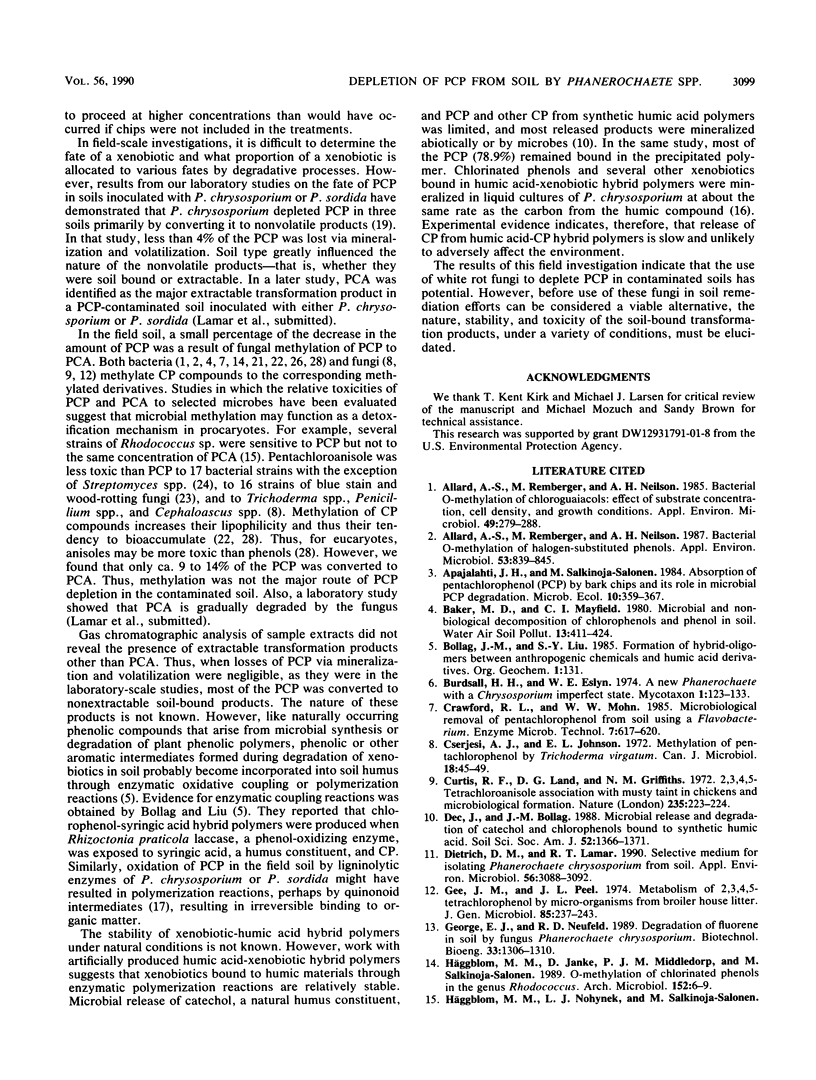
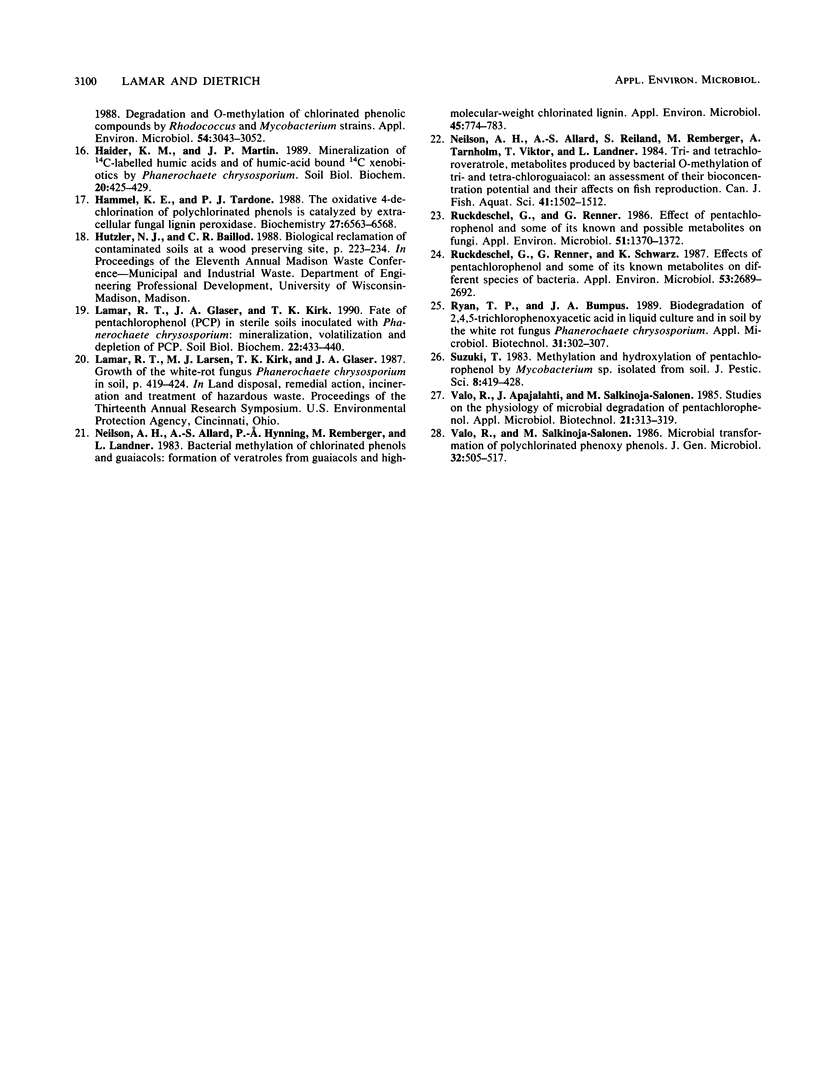
Selected References
These references are in PubMed. This may not be the complete list of references from this article.
- Allard A. S., Remberger M., Neilson A. H. Bacterial O-methylation of halogen-substituted phenols. Appl Environ Microbiol. 1987 Apr;53(4):839–845. doi: 10.1128/aem.53.4.839-845.1987. [DOI] [PMC free article] [PubMed] [Google Scholar]
- Allard A. S., Remberger M., Neilson A. H. Bacterial o-methylation of chloroguaiacols: effect of substrate concentration, cell density, and growth conditions. Appl Environ Microbiol. 1985 Feb;49(2):279–288. doi: 10.1128/aem.49.2.279-288.1985. [DOI] [PMC free article] [PubMed] [Google Scholar]
- Cserjesi A. J., Johnson E. L. Methylation of pentachlorophenol by Trichoderma virgatum. Can J Microbiol. 1972 Jan;18(1):45–49. doi: 10.1139/m72-007. [DOI] [PubMed] [Google Scholar]
- Dietrich D. M., Lamar R. T. Selective Medium for Isolating Phanerochaete chrysosporium from Soil. Appl Environ Microbiol. 1990 Oct;56(10):3088–3092. doi: 10.1128/aem.56.10.3088-3092.1990. [DOI] [PMC free article] [PubMed] [Google Scholar]
- Gee J. M., Peel J. L. Metabolism of 2,3,4,6-tetrachlorophenol by micro-organisms from broiler house litter. J Gen Microbiol. 1974 Dec;85(2):237–243. doi: 10.1099/00221287-85-2-237. [DOI] [PubMed] [Google Scholar]
- Neilson A. H., Allard A. S., Hynning P. A., Remberger M., Landner L. Bacterial methylation of chlorinated phenols and guaiacols: formation of veratroles from guaiacols and high-molecular-weight chlorinated lignin. Appl Environ Microbiol. 1983 Mar;45(3):774–783. doi: 10.1128/aem.45.3.774-783.1983. [DOI] [PMC free article] [PubMed] [Google Scholar]
- Ruckdeschel G., Renner G. Effects of pentachlorophenol and some of its known and possible metabolites on fungi. Appl Environ Microbiol. 1986 Jun;51(6):1370–1372. doi: 10.1128/aem.51.6.1370-1372.1986. [DOI] [PMC free article] [PubMed] [Google Scholar]
- Ruckdeschel G., Renner G., Schwarz K. Effects of pentachlorophenol and some of its known and possible metabolites on different species of bacteria. Appl Environ Microbiol. 1987 Nov;53(11):2689–2692. doi: 10.1128/aem.53.11.2689-2692.1987. [DOI] [PMC free article] [PubMed] [Google Scholar]


